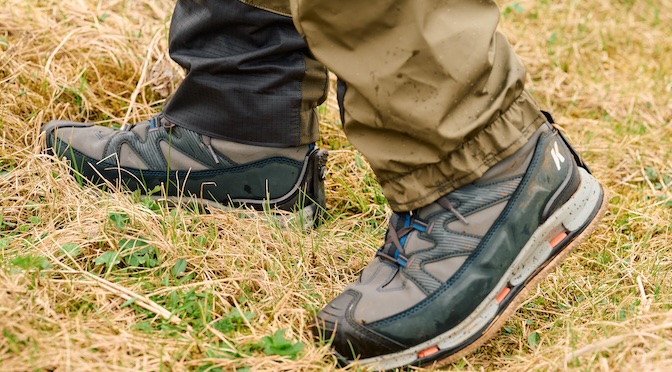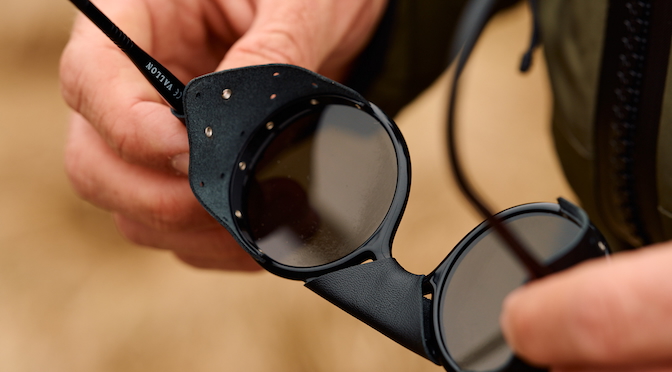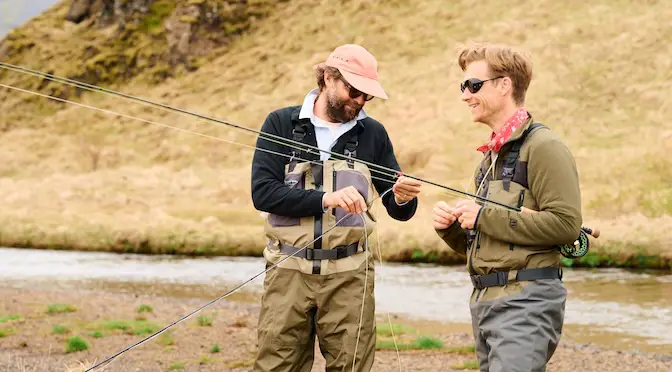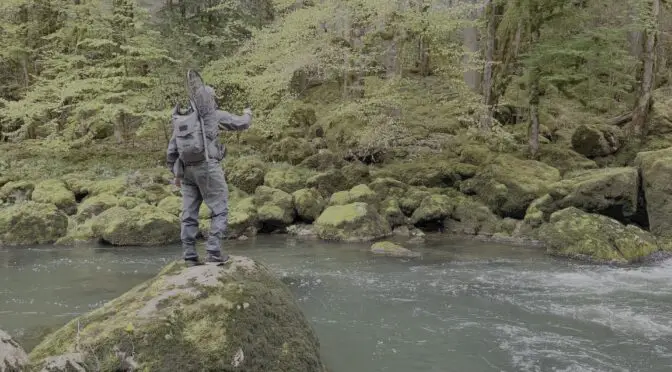Last updated on January 9th, 2024.
- A Historic Reintroduction Takes Shape - May 16, 2025
- Wrangler Duo Key to Wyoming Wilderness Adventure - October 1, 2024
- A Guide to the Best Flies for the Driftless Area - May 6, 2024
The Arctic Grayling – a historical species that was extirpated in the early 1900s – was once native to Michigan rivers and streams.
The Michigan Department of Natural Resources and the Little River Band of Ottawa Indians (LRBOI) are now working on its reintroduction.
Arctic Grayling have a long and storied history in Michigan. The striking fish has a sail-like dorsal fin and a slate blue color on its body. It was virtually the only native stream salmonid in the Lower Peninsula. That was until the resident population died-off nearly a century ago.
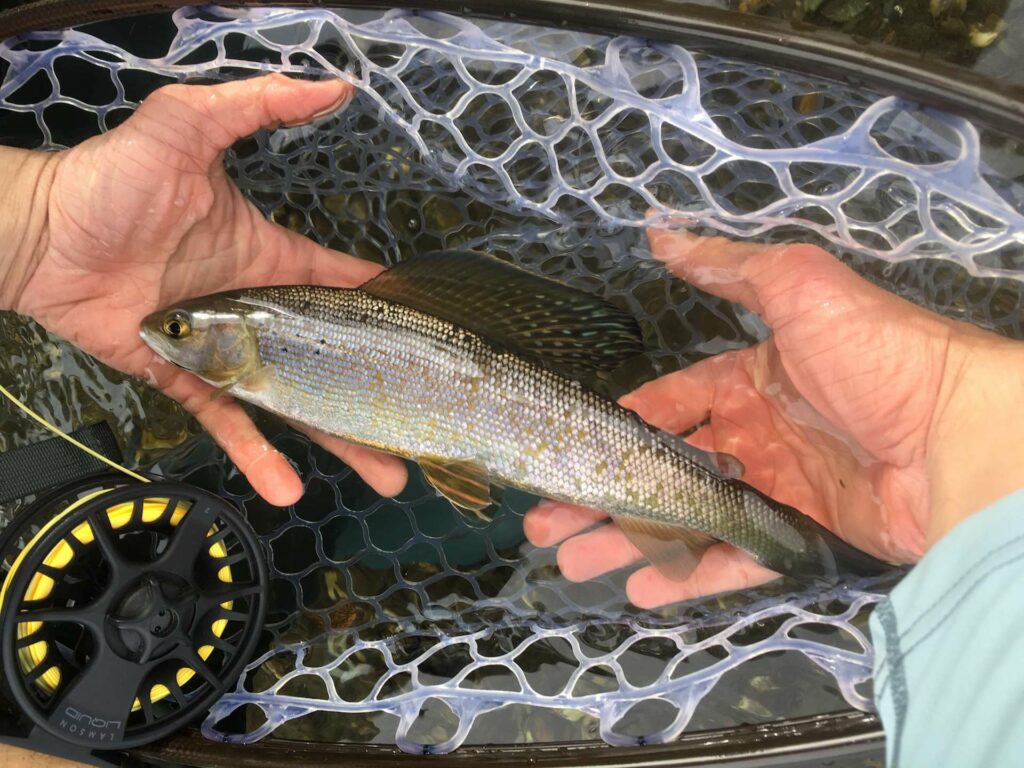
opportunity to catch these unique fish. (Photo credit: Nicole Watson)
Michigan’s Arctic Grayling Initiative consists of more than 40 organizations. That is in addition to the DNR’s and LRBOI’s foundational partnership. It is committed to re-introducing this culturally significant species.
“Our formal mission as an initiative is to restore self-sustaining populations of Arctic Grayling within its historic range in Michigan,” said DNR Fisheries Division Assistant Chief Todd Grischke.
“The fact we have a town named after this fish indicates to me just how iconic it was. It still is to many in this state,” Grischke said. “When you add in other factors—such as the fact they’re only native to Michigan and Montana out of all the lower 48 states—it just adds to their legendary status.”
19th Century Extinction Causes
In the 19th century, northern Michigan streams were filled with Arctic Grayling. They offered anglers plenty of opportunity to catch these unique fish. But a variety of factors slowly erased their presence. This includes the cutting of Michigan’s vast virgin forest in the 1800s.
“Logging practices during that time period used streams to transport trees that were harvested. The streams carried logs to mills for processing,” explained Grischke. “These practices greatly impacted the physical nature of those streams. They basically destroyed stream habitats for fish, including grayling spawning areas.”
Additionally, the physical cutting of trees caused blockages in many of those same streams. This often displaced grayling from where they lived.
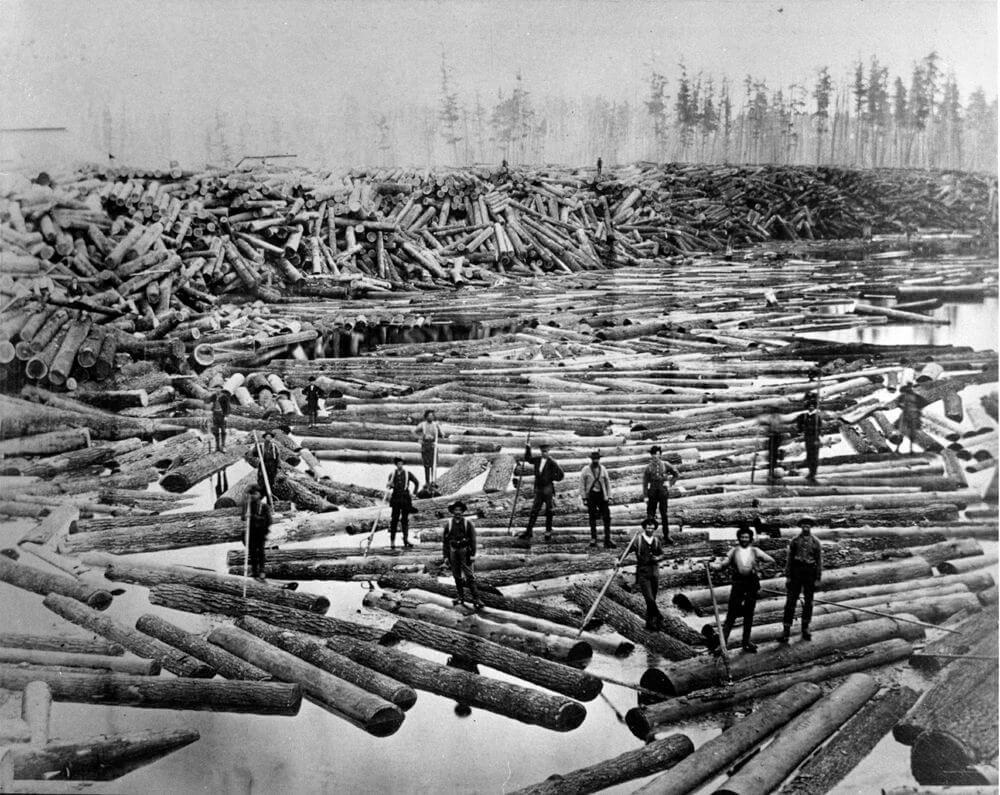
Grayling decline.
But this was just one issue affecting Michigan’s Arctic Grayling. Another was the introduction of non-native fish species.
“Other species of trout were introduced into Michigan’s waters. They created additional opportunities for anglers to pursue. The grayling couldn’t compete with more aggressive fish like brown, rainbow or brook trout,” Grischke said.
The final nail in the coffin was over-fishing. It occurred readily with people harvesting the grayling in large quantities. No possession limits or other regulations stopped them. The last Arctic Grayling on record in Michigan were taken in 1936. Since that time natural resource managers have repeatedly looked for options to reintroduce it.
Previous Re-introduction Attempts Fail
“In the late 1800s and early 1900s, millions of Arctic Grayling fry were stocked into Michigan streams, but that didn’t work,” said Grischke. “And then in the 1980s, the DNR stocked hatchery-reared yearlings into lakes and streams, but again to no avail.”
In each of these previous re-introduction efforts something critical was missing. That prevented these populations from flourishing. The Michigan Arctic Grayling Initiative hopes to rectify that. “We have learned from these previous re-introduction events and plan to capitalize on new approaches, dedicated partnerships, and advanced technology,” Grischke explained.
Initiative’s Action Plan for Arctic Grayling
Much of the initiative’s focus is detailed in its official Action Plan. It was unveiled in July 2017. It is reflective of the vast work to be done by the various partners. The group is gleaning as much information as possible from the state of Montan. Their effort at re-establishing stable Arctic Grayling populations was successful.
“Within our Action Plan we’ve identified four focus areas and associated goals that were developed by all the partners and that we believe will give us the best chance of success moving forward,” said Grischke.
The four focus areas on the Action Plan include research; management; fish production; and outreach and education.
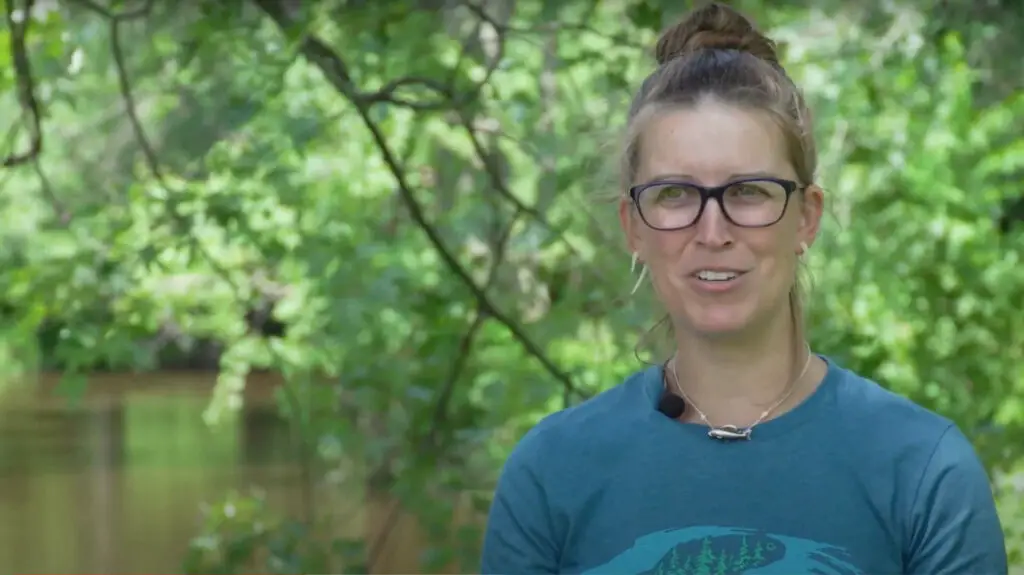
understanding potential obstacles to a successful introduction after past failures. (Photo credit:
Michigan Department of Natural Resources)
Research Focus
This component actually began prior to the foundational partnership. In 2013, Michigan Technological University and the LRBOI completed research on the Manistee River. This evaluated current conditions for Arctic Grayling suitability. Then, immediately after forming the official partnership, the DNR received a grant from Consumers Energy Foundation. It was meant to fund a comprehensive habitat evaluation in the Upper Manistee watershed.
This work was performed in 2017. Also in 2017, the LRBOI initiated research on in-stream Remote Site Incubators (RSIs). RSIs allow fish to be reared and released directly into streams to better allow them to imprint to the waters they will hopefully reproduce in later on. Better imprinting means the initiative will be one-step closer to establishing a self-sustaining population of Arctic Grayling. This is the ultimate outcome of this effort. This technology was pivotal to the success of Montana’s Arctic Grayling reintroduction efforts.
Additional research began in 2018. Michigan State University (MSU) and Nicole Watson, a Fisheries and Wildlife Ph.D., looked at understanding imprinting. They did this through thyroid hormone analysis and water choice trials. They try to understand the relationships between young resident trout and grayling. This includes competition and predation. Watson’s third year of work at MSU, scheduled for spring 2020, was postponed indefinitely because of Covid 19.
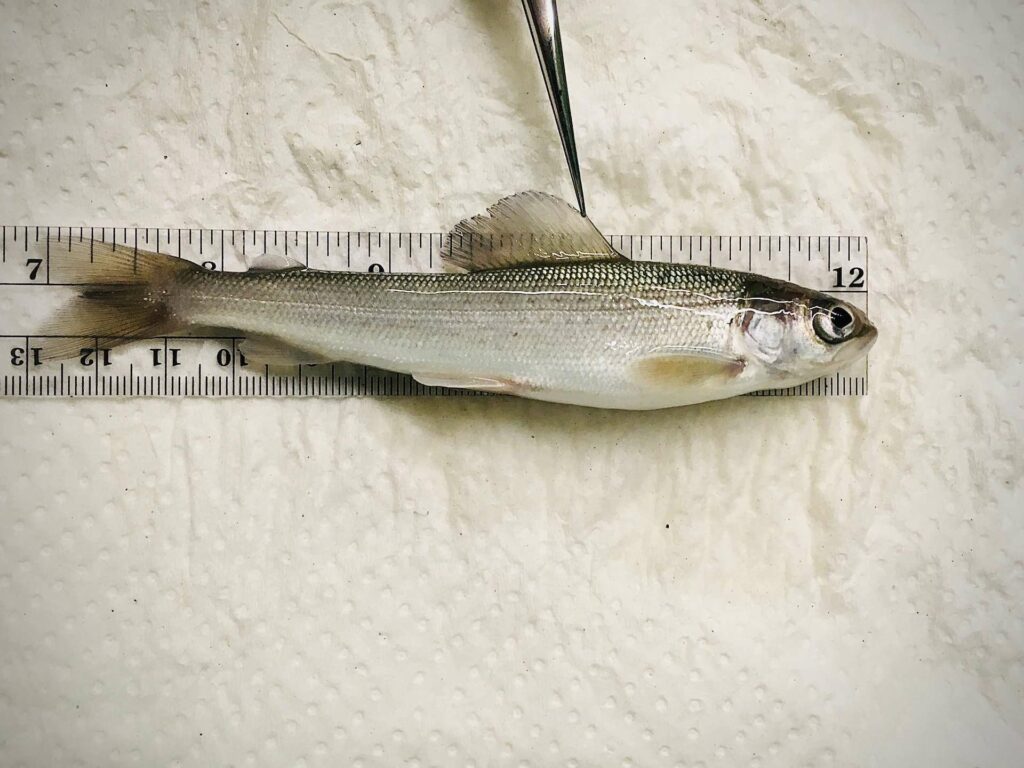
brook trout versus brown trout. (Photo credit: Nicole Watson)
According to Grischke, much more research is needed into the future. This concerns the next 5 to 15 years. The initiative addresses river habitats, genetics, inter-species competition, RSI technology and function.
“A best-case scenario would be Arctic Grayling being introduced into Michigan waters in the next 3-5 years,” said Grischke. In the meantime, scientists evaluate additional streams for the initial introduction.
Management, Production and Education Phases
Goals for the management focus area include evaluating key habitat criteria and establishing population goals. They will also work on regulations related to fishing for grayling.
The fish production focus area’s work will center on experimenting with Remote Site Incubator designs. This ensures that fish health standards are upheld. They will also focus on developing and maintaining a genetically diverse brood stock. This will be housed at a state hatchery facility.
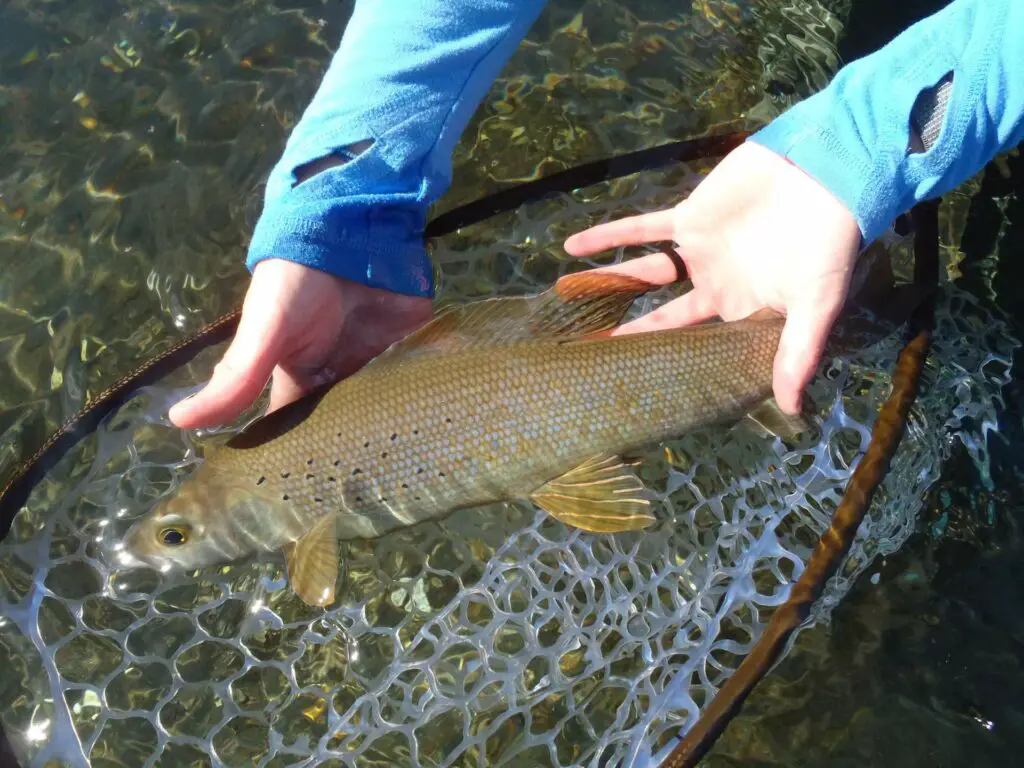
initiative’s efforts, identifying future partners, and creating a stewardship plan. (Photo credit: Nicole
Watson)
“The goals of these focus areas will be accomplished by partner representatives working together,” Grischke shared. “The only way this initiative will be successful is if we continue to work together towards our mission.”
A crucial step toward the reintroduction of Arctic grayling to Michigan waters was done in September. 4,000 young, healthy fish were moved to a facility with conditions that will trigger spawning. Michigan’s first year-class of future brood stock average 6.5 inches long. They were transferred from the Oden State Fish Hatchery near Petoskey to the Marquette State Fish Hatchery. Here fish are reared in conditions that mimic the grayling’s natural habitat. The move was important. Grayling need water temperatures and daylight that change with the season. The water source at the Marquette hatchery does that.
Funding Is Another Priority for Arctic Grayling Support
Funding is needed for each of these four focus areas. Primarily in the areas of research and fish production. The initiative has raised approximately $700,000 to date, with a goal of $1.2 million. In the next 2-3 years, most of the funding will go towards stream habitat evaluations, fish rearing, equipment, and travel. According to Grischke, funding is not “complete” for any of the focus areas at this point in time. It will focus on private donations, Trout Unlimited national and local chapter support, foundations and company sponsors.
Individual donors can contribute directly to the State of Michigan with checks payable to Michigan Department of Natural Resources, Fisheries Division, and mailed to: Cashiers Office, Attn: MDNR Fisheries Division, PO Box 30451, Lansing, MI 48909-7951. The donations should indicate that the money is to be used for the Arctic Grayling Initiative.
To learn more about the Michigan Arctic Grayling Initiative and Nicole Watson’s research work, view the Michigan Arctic Grayling Initiative video and migrayling.org.
Iron Fish Distillery, Michigan’s first working farm solely dedicated to the practice of distilling small-batch craft spirits, has introduced a commemorative rye whiskey. It celebrates its support of the reintroduction of Michigan Arctic Grayling to its home waters. Iron Fish Distillery makes charitable contributions toward research into the viability of re-establishing native Grayling stock to Michigan waters.
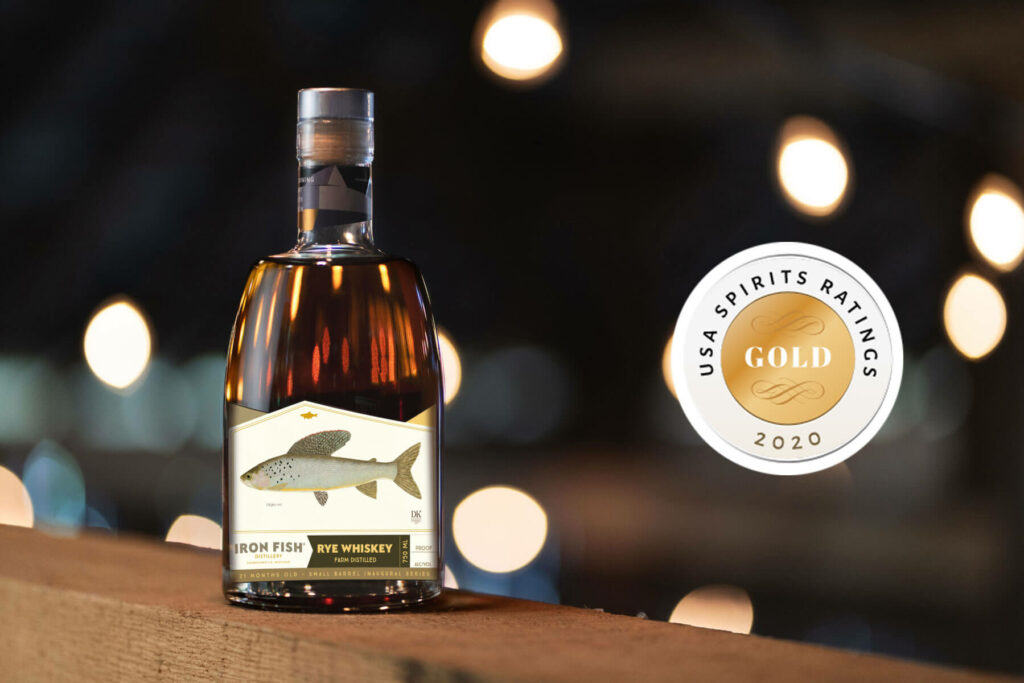
Readers can contribute to the Iron Fish Arctic Grayling Research Fund. It’s a component fund of the Manistee County Community Foundation. To learn more about Iron Fish Distilling visit their website. To purchase the Iron Fish commemorative Arctic Grayling Rye Whiskey, visit the Spirit Hub website.
Read more about fly fishing the Midwest:

